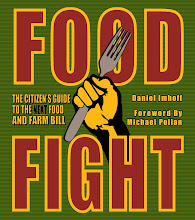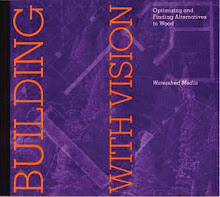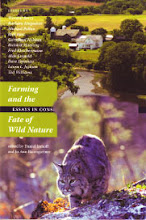See no evil, hear no evil, eat no evil. This seems to be the operating principle behind a slew of recent legal initiatives aimed at sheltering animal factory agriculture operations from public view.
State legislatures in Iowa, Minnesota and Florida are now considering bills that would make it a criminal offense to gain employment for the purposes of videotaping what goes on the behind warehouse walls of Concentrated Animal Feeding Operations, or CAFOs. In March, the Iowa House of Representatives passed such an anti- “whistle blower” measure, co-written by the Iowa Poultry Association, which is now before the State Senate.
Pre-emptive legal strikes by the CAFO industry to put a chilling effect on anyone considering tarnishing its public image are hardly surprising. Industrial animal food producers are reeling from a series of shocking undercover videos that expose the abuse and suffering on the disassembly lines of slaughterhouses and inside warehouses crammed with hogs, laying hens, and meat birds. Such imagery is hard to shake from your subconscious. (Just this week a video was released of a sick calf getting killed with a pickaxe.) Opinion polls consistently show that Americans are increasingly concerned about animal welfare and health standards, and often willing to pay more for them.
While the industry would like us to believe that what you don’t know can’t hurt you, we are barely six months removed from last summer’s recall of 500 million eggs due to salmonella contamination from just two CAFO operations in Iowa. In response, people flocked to farmers markets, specialty retailers, and other venues to purchase free-range, organic, and cage-free alternatives.
In fact, industrial animal agriculture has already made bold assaults against First Amendment rights. In three states—Kansas, Montana, and North Dakota—it is illegal to photograph a factory farm without permission of the owner. Thirteen states have passed agricultural disparagement laws—a.k.a. veggie libel laws—that restrict what can be said about perishable food products. None of these laws have been challenged in federal court. The Texas Cattlemen’s Association, however, engaged Oprah Winfrey in a prolonged legal battle in the late 1990s for claiming on television that she had been “stopped cold from eating another burger” after learning about cattle feeding procedures from reformed rancher Howard Lyman. The popular talk show host had both sufficient resources and determination to fight and ultimately won the decision.
Numerous states have passed Common Farming Exemptions, which essentially allow the industry to determine animal cruelty statutes by defining them as standard practices. Does this sound like the fox guarding the henhouse? While the welfare of our pets is legally protected, there are no federal laws that presently govern the raising of food animals. Food animals are protected during transport (very hard to enforce) and during slaughter (though this doesn’t include the 9 billion chickens raised in the United States each year.)
The real question citizens and our elected representatives should be asking is, what do the animal factories have to hide, and do we really want to be part of such a clandestine food system? Is a cheap bacon cheeseburger or bucket of chicken worth the loss of democratic freedoms? We are talking about food production, after all, not missile defense.
Dr. Temple Grandin, animal behavior specialist at Colorado State University and long-time consultant to the livestock industry, argues in her most recent book, Animals Make Us Human, for greater transparency. Animal food producing operations, she suggests, should be able to pass a random inspection test, where a non-expert can visit and intuit how well animals are being treated. The best facilities, in her opinion, have video cameras streaming at all times, allowing for constant monitoring. Dr. Grandin is far from a radical animal welfare activist, and remains one of the most respected people in the world on such matters.
Animal agriculture impacts the planet in powerful ways. Tens of billions of food animals consume vast amounts of feed, generate massive volumes of waste, and make cheap fat and cholesterol laden meat, eggs, and dairy products the centerpiece rather than a vital component of every meal.
Proponents have been arguing for years that industrial food production is necessary to feed the word’s ever-increasing population. Essentially we are being told that the CAFO industry is too big to fail. Research increasingly shows that modern sustainable agriculture operations can be equally or more productive than conventional ones: without federal subsidies, environmental impacts, and dubious health implications—or infringements upon constitutionally protected freedom of speech.
Organic and sustainable agriculture practitioners have spent the last thirty years with an open source approach to information about farming techniques. For the most part, what they have learned the hard way about chemical-free, soil enhancing agriculture is out in the open for anyone to learn. Certified organic and biodynamic producers are required to pay fees to third-parties to audit their practices.
Recent moves to pre-empt the public from learning about the sometimes unspeakable conditions of modern intensive livestock operations are just the tip of the iceberg. Local communities are being stripped of their powers to determine zoning and land use concerning agricultural operations. Why aren’t local citizens permitted the right to decide whether a CAFO can be sited in their community in states like Illinois and Iowa?
There is a lot more information that the consuming public might find useful about industrial animal food production: the quantity of antibiotics used during a given production cycle; the exact contents of feed rations; the quantities, content and dates of air and water emissions from a CAFO; the amount of federal subsidies that support a particular operation. All are concerns with real public consequences.
We all have to eat. But we also have a right to know. Food should not come at the expense of animal welfare, the health of someone else’s community, or perhaps most importantly, our democratic freedoms.









